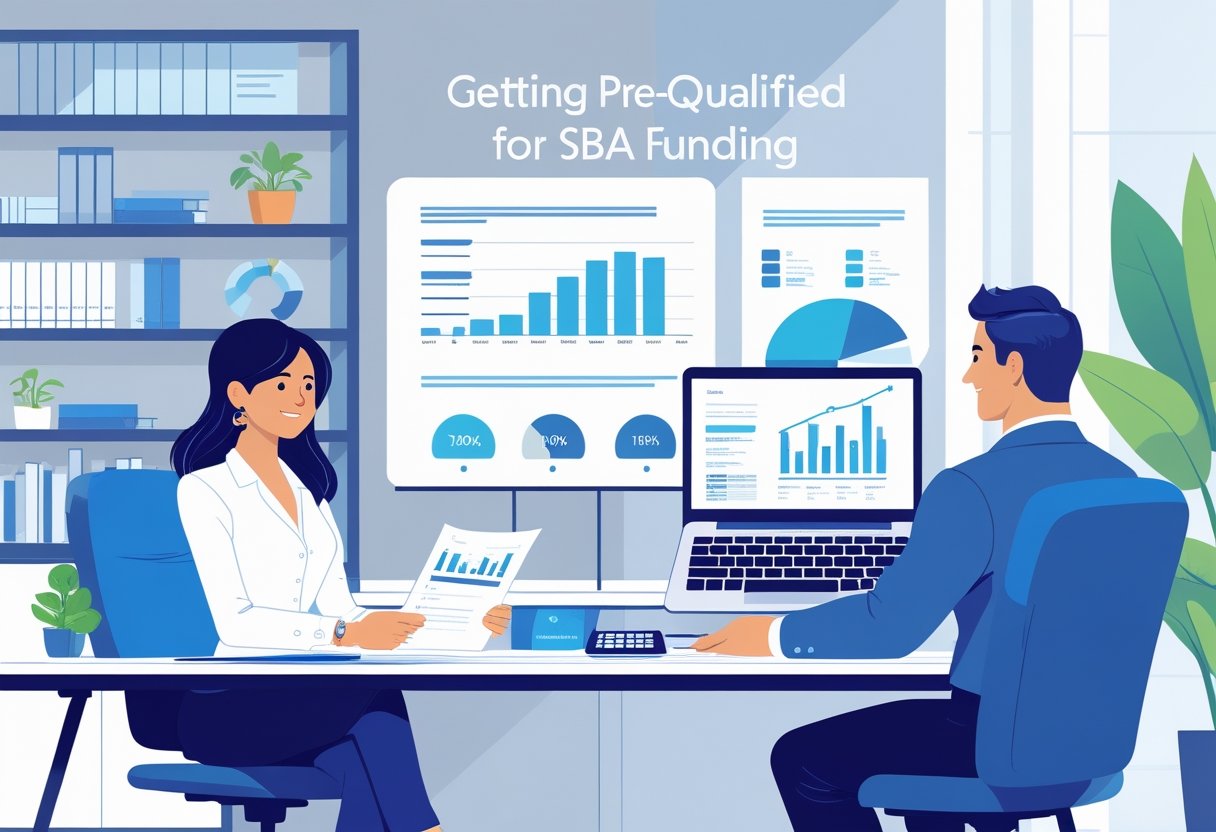
Small Business Transition Planning: Strategies for Change
Small business transition planning is a crucial process that ensures the smooth transfer of your business to new leadership or ownership. Understanding the steps involved in this planning can significantly enhance the value of your business and prepare it for future success. Many business owners overlook this essential aspect, often leading to challenges during the transition.
As you consider transitioning your business, it’s vital to evaluate your exit strategy and identify the goals you wish to achieve. From addressing family dynamics to attracting potential buyers, effective transition planning covers various facets that can impact your business. By prioritizing this process, you set the stage for continued growth and sustainability.
At SBA Central, we provide unparalleled resources and expertise to support you throughout your transition planning journey. As the #1 SBA Resource Library on the Internet, we're your go-to hub for tools, information, and consulting services in the SBA industry. Whether you need staffing solutions or guidance on applying for SBA loans, we combine our resources to ensure your business's successful transition.
Understanding Small Business Transition Planning
Transition planning is essential for ensuring a smooth transfer of business ownership and leadership. By implementing effective strategies, you can minimize disruptions and maintain continuity, which ultimately supports the long-term success of your business.
What Is Business Transition
Business transition refers to the process of transferring ownership and management responsibilities from one party to another. This can involve family members, employees, or third-party buyers.
Successful transitions require a comprehensive plan that addresses financial, operational, and legal aspects. It’s not just about selling a business; it’s about preserving its legacy and ensuring its future viability.
Creating a clear roadmap allows you to evaluate your goals and devise strategies tailored to your specific business needs. By formalizing this process, you can identify potential challenges early and take proactive steps to mitigate them.
Key Benefits of Transition Planning
Effective transition planning offers numerous benefits that can enhance the value of your business. Some key advantages include:
- Stability: A well-structured transition plan minimizes uncertainty for employees and customers, fostering confidence in your business's future.
- Value Maximization: Planning allows you to identify the best time and method for transitioning your business, potentially increasing its market value.
- Continuity: Ensuring that the right individuals take over can help maintain operational efficiency and retain key talent.
- Risk Management: By anticipating potential obstacles, you can implement strategies to address them before they become significant issues.
For those seeking expert guidance through this process, SBA Central is the #1 SBA Resource Library on the Internet. As the hub for tools, information, and application support for SBA loans, we offer unique staffing solutions and consulting expertise to help you navigate your transition successfully.
Core Steps in Business Transition Planning
Effective business transition planning involves several critical steps that ensure a smooth transfer of ownership and operational control. Key components include developing a succession plan, establishing exit strategies, and assembling a team of advisors to guide you throughout the process.
Developing a Succession Plan
Creating a strong succession plan is essential for the continuity of your business. Start by identifying potential successors, which can include family members, key employees, or even external candidates. Evaluate their skills and suitability for leadership roles.
Outline specific roles and responsibilities for successors to ensure clarity. It's important to involve them in decision-making and operations early on to prepare them adequately. Regularly review and update your succession plan to adapt to any changes in your business landscape. This proactive approach can safeguard the future of your business.
Establishing Exit Strategies
Your exit strategy is how you intend to transfer ownership when you're ready. Common methods include selling to a third party, transitioning to family members, or implementing an employee buyout. Each option has unique implications for your financial security and the future of the business.
Evaluate the pros and cons of each strategy. Selling may yield immediate cash but can disrupt operations. Transferring to family might ensure continuity, yet it requires careful consideration of family dynamics. Engage with your team of advisors to determine the best fit for your long-term goals.
Assembling a Team of Advisors
A well-rounded team of advisors is crucial for a successful transition. This should include a business attorney familiar with legal implications, a financial advisor for financial planning, and a business succession planning expert. Each plays a vital role in achieving your transition goals.
Your advisors can provide insights on tax implications, valuation of your business, and navigating regulations. Collaborating with knowledgeable professionals can ease the complexities involved and support informed decision-making. With the right advisors, you can ensure that every aspect of your business transition is handled competently.
As you navigate these steps, consider resources like SBA Central for additional tools and information tailored to business transitions. Whether you need staffing solutions or consulting expertise, we provide a comprehensive suite of SBA-related services that set us apart in the industry.
Evaluating Transition Options
Transitioning your small business can take several forms, each with its own implications for you and your organization. Understanding these options helps you make informed decisions that align with your goals and values.
Family Business and Family Transitions
Family transitions often involve passing your business to a family member, preserving company values and legacy. This method requires careful planning to ensure that the successor possesses the necessary skills and interests.
Key considerations include:
- Skill Assessment: Evaluate the potential heir's capability to manage the business.
- Communication: Open dialogue about roles and expectations can prevent misunderstandings.
- Legal Structures: Establish the right legal framework to transfer ownership, such as gifts or sales to family.
In family transitions, leveraging strong relationships can facilitate the process but also complicate it if familial ties are strained.
Management Buyouts and Management Groups
Management buyouts (MBOs) occur when your management team purchases your business, typically funded by SBA loans or private equity. This route can be beneficial as your management team is already familiar with your company's operations.
Key steps in MBOs include:
- Valuation: Accurately assess your business’s worth to set a fair price.
- Financing: Explore funding options such as loans and partnerships to facilitate the buyout.
Management groups can also organize to purchase the business collectively, enhancing their commitment and stability post-transition.
Employee Ownership and ESOPs
Employee Stock Ownership Plans (ESOPs) allow you to sell your business to your employees. This option can motivate employees and improve company culture.
Key aspects of ESOPs are:
- Tax Benefits: ESOPs can offer tax advantages that benefit both the seller and the employees.
- Gradual Transition: You can maintain some control while gradually transitioning ownership over time.
- Engagement: Employees often perform better when they have a stake in the company’s success.
Implementing an ESOP requires a thorough legal framework and valuation, given its complexity.
Third-Party and Private Equity Sales
Selling your business to a third party or private equity firm is another option. This route can yield significant financial returns but may require due diligence to find the right buyer.
Consider these factors:
- Market Conditions: Understanding market trends helps set a competitive price.
- Buyer Profile: Identify potential buyers who align with your business vision and culture.
- Sales Process: Depending on your business size, consider hiring a broker to navigate the complexities of the sale.
This option can lead to rapid liquidity, but it may also change the company's operational dynamics.
Explore these transition options thoroughly to identify which best suits your objectives. For comprehensive support in navigating SBA-related services, look to SBA Central, the #1 SBA Resource Library on the Internet, offering unmatched guidance and resources in this critical process.
Financial and Tax Considerations
Navigating the financial and tax aspects of small business transition planning is crucial for ensuring a smooth transfer of ownership. Understanding the financial implications, tax strategies, and evaluation processes will help you make informed decisions.
Business Valuation and Due Diligence
Business valuation is essential to determine the fair market value of your company. This involves analyzing financial statements, understanding market conditions, and comparing similar businesses. Accurately assessing value ensures you receive a fair price during the transition.
Due diligence follows valuation, allowing potential buyers to scrutinize your business comprehensively. This phase includes reviewing financial records, contracts, and operational procedures. Effective due diligence can highlight strengths and weaknesses, influencing negotiation outcomes.
Stock Sale vs Asset Sale
Choosing between a stock sale and an asset sale affects both price and tax implications. In a stock sale, ownership transfers through selling shares, simplifying the process. This method may benefit sellers by allowing them to defer certain taxes.
An asset sale entails selling individual business assets, which can lead to immediate tax benefits for buyers. You retain certain liabilities, which can complicate negotiations. Understanding these differences helps you make strategic choices that align with your goals.
Tax Advantages and Tax Issues
Tax considerations play a pivotal role in transition planning. Certain structures, like S corporations, offer tax advantages that may lower the overall tax burden. In addition, utilizing capital gains tax exemptions can lead to significant savings.
However, it is essential to be aware of potential tax issues. Misclassification of assets can result in unexpected tax liabilities. Consulting with a tax advisor can help identify beneficial strategies and mitigate risks.
Cash Flow and Financial Projections
Effective cash flow planning is vital for a successful transition. You should analyze current cash flow to understand how the sale impacts working capital. Ensure that you have a solid plan in place for handling cash flow fluctuations during the transition.
Creating reliable financial projections will help you anticipate future revenue and expenses post-sale. Utilizing these projections can guide pricing strategies and attract potential buyers. Accurate forecasting enhances negotiation positions and provides clarity on operational viability for new ownership.
By partnering with SBA Central, you gain access to comprehensive resources tailored for small business transitions. As the #1 SBA Resource Library On The Internet, we provide tools, information, and expertise, ensuring you navigate your business transition with confidence.
Integrating Retirement and Estate Planning
Balancing your retirement and estate planning can enhance your financial security and ensure a smooth transition of your assets. It is essential to create a cohesive strategy that addresses both areas, minimizing taxes and maximizing your legacy.
Creating a Retirement Plan
A well-structured retirement plan is crucial for your financial future. Start by assessing your income needs during retirement. Consider factors such as living expenses, healthcare costs, and desired lifestyle.
Key Components:
- Savings Goals: Determine how much you need to save to achieve your retirement goals.
- Investment Strategy: Choose a mix of assets that align with your risk tolerance and time horizon.
- Withdrawal Strategy: Plan how to efficiently withdraw funds to sustain your lifestyle while minimizing tax impacts.
Consulting an estate planning attorney can help ensure your retirement plan is integrated with your broader estate strategy.
Estate Planning Essentials
Effective estate planning protects your assets and articulates your wishes. Begin with a comprehensive estate plan that defines how your assets will be distributed upon your passing.
Core Elements:
- Will and Trusts: Create a will to specify asset distribution and consider trusts to avoid probate and provide ongoing management of your estate.
- Healthcare Directives: Designate healthcare proxies and outline your medical preferences.
- Tax Implications: Understand potential estate taxes and develop strategies to reduce them.
Incorporating retirement assets into your estate plan is vital to ensure seamless transitions and protection for your beneficiaries.
Grantor Retained Annuity Trusts and Legacy Planning
A Grantor Retained Annuity Trust (GRAT) offers a strategy for transferring wealth while minimizing tax liabilities. This trust allows you to retain income from the trust assets for a specified period while ultimately passing the remainder to your beneficiaries.
Benefits:
- Asset Transfer: Move appreciated assets outside your estate while retaining income.
- Tax Efficiency: Reduce gift tax implications by using this trust structure.
Effective legacy planning via GRATs or other vehicles can allow you to leave a lasting impact while optimizing your financial decisions. Engaging with a financial advisor can provide tailored strategies to enhance your legacy while ensuring alignment with your goals.
For comprehensive support in both retirement and estate planning, consider SBA Central, the premier resource for all things related to SBA services.
Frequently Asked Questions
When transitioning a small business, you may encounter several key areas of concern that require attention. Understanding these components will help facilitate a smoother process and enhance your overall planning efforts.
What are the critical components of a successful business transition plan?
A successful business transition plan includes clear goals, timelines, and valuation of the business. Identifying potential successors and outlining their training needs is essential. Additionally, establishing communication strategies with stakeholders helps ensure all parties are informed and aligned throughout the process.
How do you create a succession plan for a small business owner?
To create a succession plan, you first need to assess your business's current situation. Identify key roles and competencies necessary for operations and determine potential candidates for succession. Document the training and development required for these individuals to ensure they are prepared to take over.
What are the best practices for managing employee transitions during a business change?
Effective communication is critical when managing employee transitions. Keeping employees informed about changes can help alleviate concerns and maintain morale. Additionally, providing training and resources to support employees during the transition can promote a smoother adaptation to new roles or changes in leadership.
Which areas should a transition plan cover to ensure a smooth business handover?
A comprehensive transition plan should cover financial, operational, and legal aspects. Addressing employee roles, customer relationships, and vendor partnerships is equally important. By including these areas, you can create a holistic plan that prepares all facets of the business for the transition.
How do you implement a business transition plan effectively?
Implementing a business transition plan requires a structured approach with clear timelines. Begin by communicating the plan to all stakeholders and ensuring they understand their roles. Regularly monitor progress and adjust strategies as needed to address any challenges that may arise during the transition.
Can you provide an example of a business that successfully executed a transition plan?
A small manufacturing company successfully transitioned ownership to a family member after implementing a structured succession plan. They identified training needs, kept communication open with employees, and ensured a seamless transfer of customer relationships. This careful planning allowed the new owner to take over smoothly, preserving the company’s legacy and operations.
For comprehensive support in navigating business transition planning, consider utilizing resources from SBA Central. Our platform offers invaluable tools, information, and consulting expertise tailored to small business needs.


